
[Summary] Japanese Verb Conjugation Perfect Guide
Japanese Verb Conjugation Forms: For Beginners Masu Form and Its Derivatives Plain Form Nai form - The Plain Negative form Ta form - The Plain Past Affirmative Form Nakatta Form - The Plain Past Negative Form Te Form Japanese Verb Conjugation Forms: For Intermediate Conditional Form ba Conditional Form tara Imperative Form Volitional Form
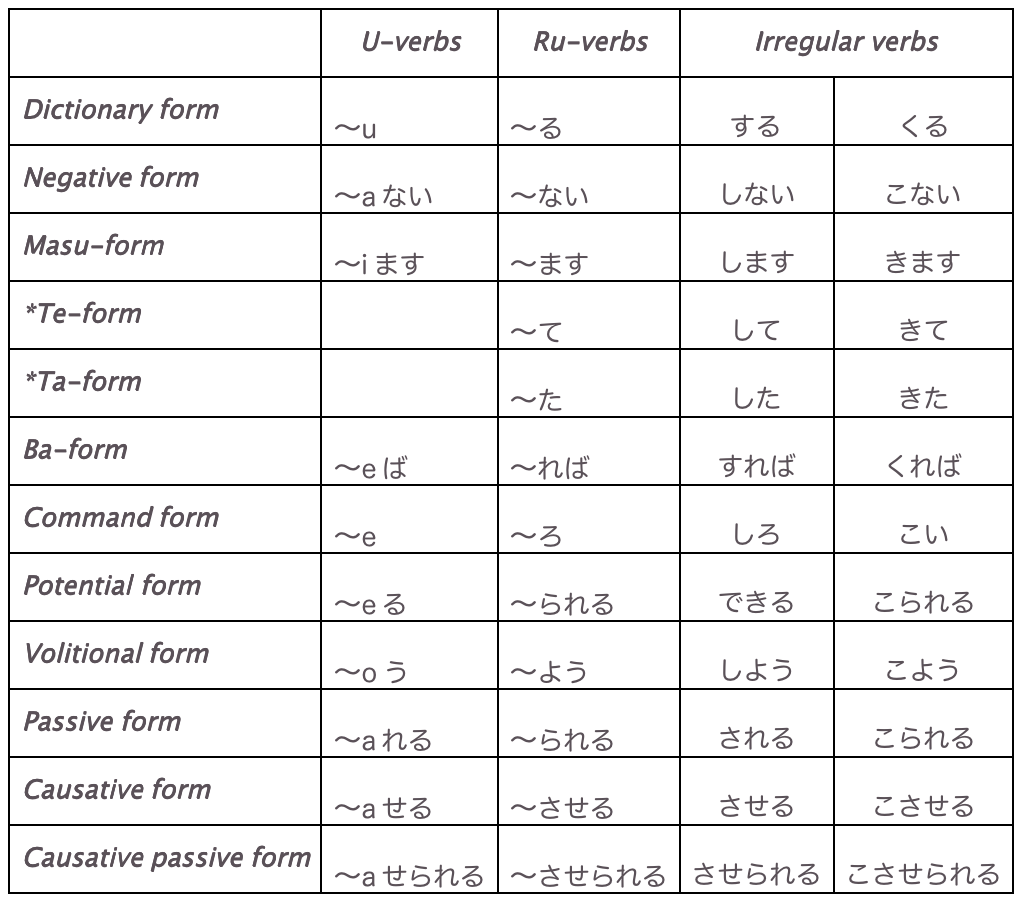
Japanese Japanese Verbs Conjugation Reference Chart Poster Printable ubicaciondepersonas.cdmx
The chart below shows how to conjugate Japanese Godan verbs: Base 1: Base 1 can not be used by itself but becomes the plain form negative simply by adding -nai. (ex. hanasanai - I won't say anything.) If the verb ends in う (u) then the end for Base 1 becomes わ (wa). (ex. au (Base 1) -> awa) (Plain form is what people use when talking to a.

Printable Japanese Verb Conjugation Cheatsheet NEW UPDATED Etsy UK
Every single Japanese verb conjugation explained in one definitive video textbook that looks at over 250 different examples of verb conjugation usage, coveri.

Conjugating TeForm in Japanese Handy Illustrated Howto Guide!
Japanese verbs conjugate to express tenses, to connect with other phrases, and to show various nuances. Compared to other languages, Japanese conjugation types can be a bit more complicated. There are many different verb forms as well as polite forms. The conjugations can even be combined together! Ru-verbs, U-verbs, and Irregular Verbs
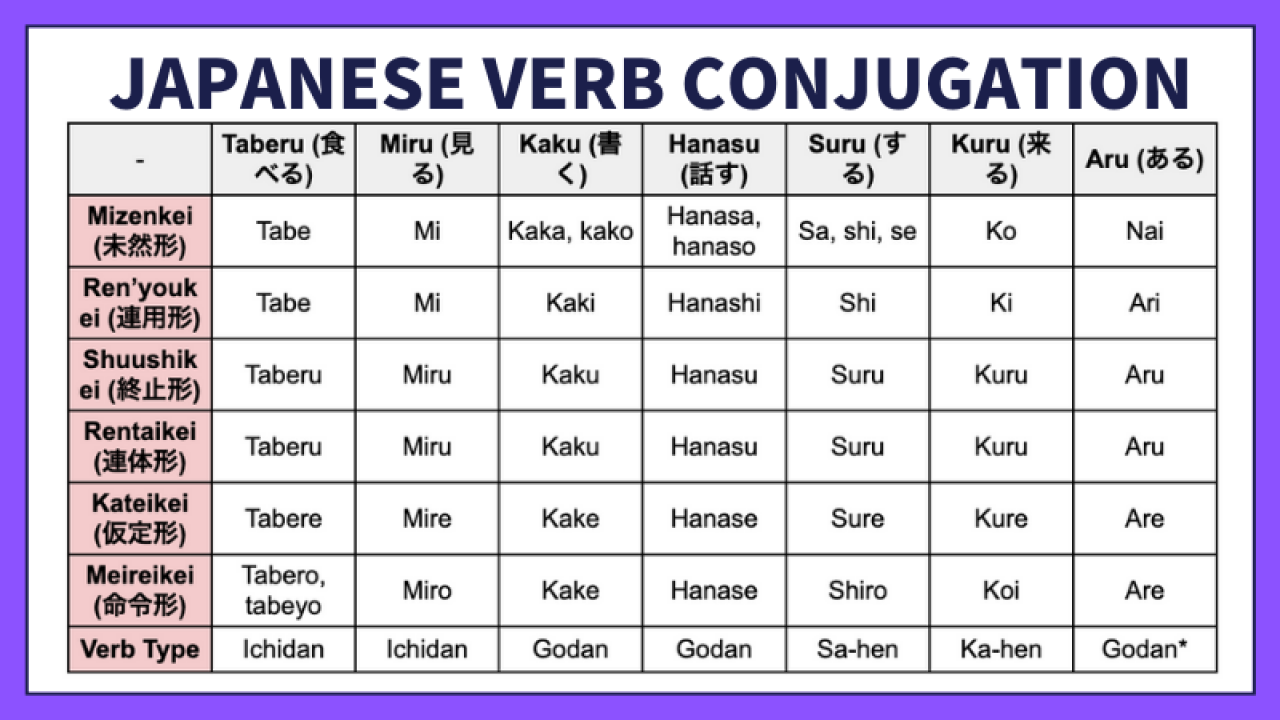
Japanese Verbs Conjugation Chart
Group 1 Group 2 Group 3 Present Negative To make sentence negative, verb endings are changed into negative forms with the ~ nai form. Past Negative Learn how to conjugate Japanese verbs in the present tense, past tense, present negative, and past negative with these helpful charts.
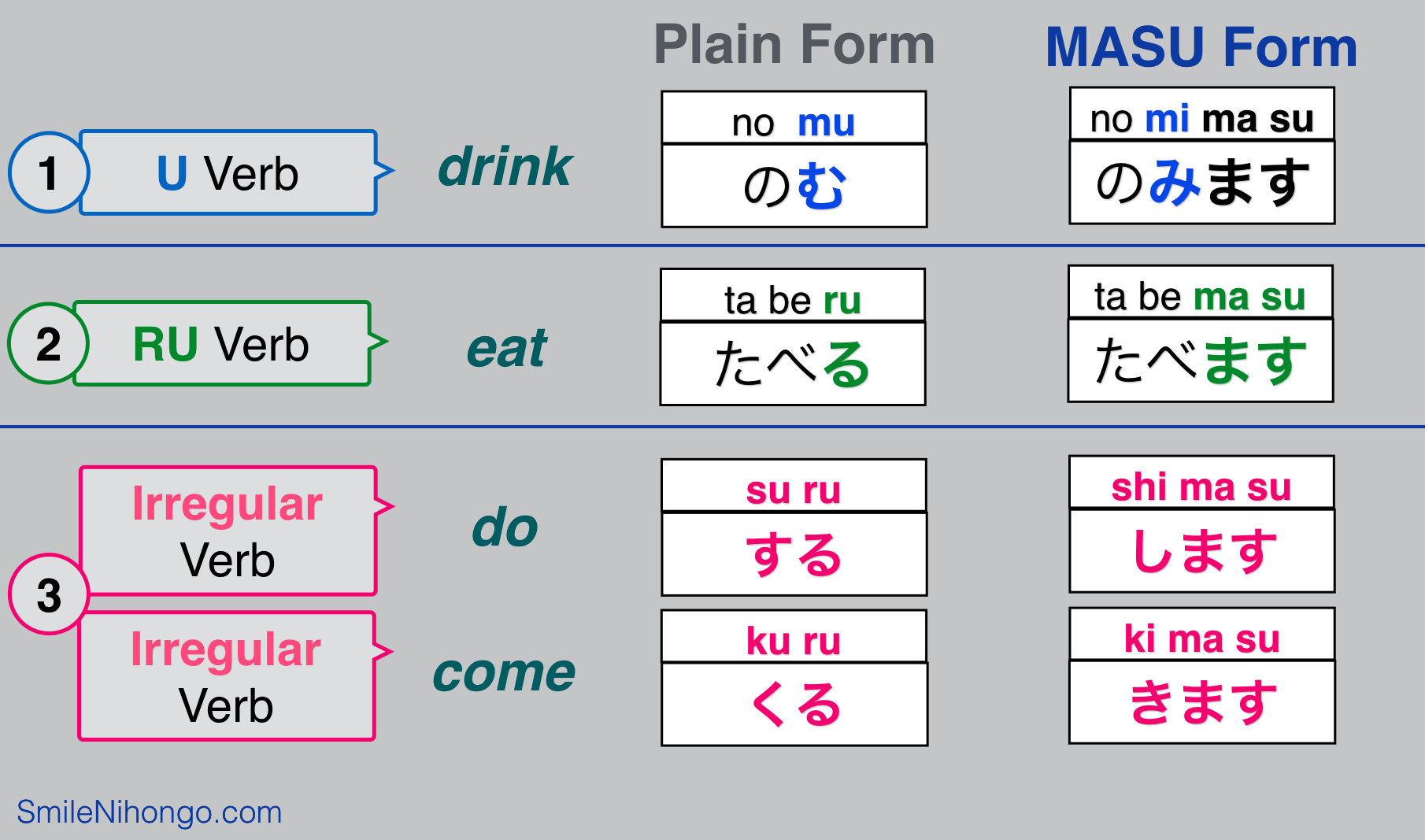
What Japanese Verb Forms to Use Download the Verb Conjugation Chart
Conjugation in Japanese is described as the variation of the form of a certain part of speech—such as verbs—which is influenced by certain elements. These include: voice, mood, tense, and politeness level. In Japanese, there are four parts of speech which have conjugation: 動詞 ( dōshi) — Verb 助動詞 ( jodōshi) — Auxiliary Verb

Learn JLPT N5 Japanese Verb Conjugation Negative Forms Japanese language lesson YouTube
To conjugate U verbs, drop the U, and add I. Then, add Mas (ます) for the affirmative form and Masen ( ません) to make the negative form of the verb. Japanese verb conjugation list (U-Verbs) Irregular verbs There are only two irregular verbs in Japanese. We have listed both of them in their different forms here How to conjugate past tense verbs

Japanese Verb Basics Part 1 Verb Groups & the Masu Form
Japanese Verb Conjugation: Present Tense, Masu-Form and Plain Form Past Tense: Formal Mashita-Form and Plain Ta-Form Forming Negative Verbs in Japanese: Masen, Masen Deshita, Nai, and Nakatta Te-Form in Japanese Japanese Verb Conjugation Practice — Try It Out! Japanese Verb Conjugation Basics: Mastered!
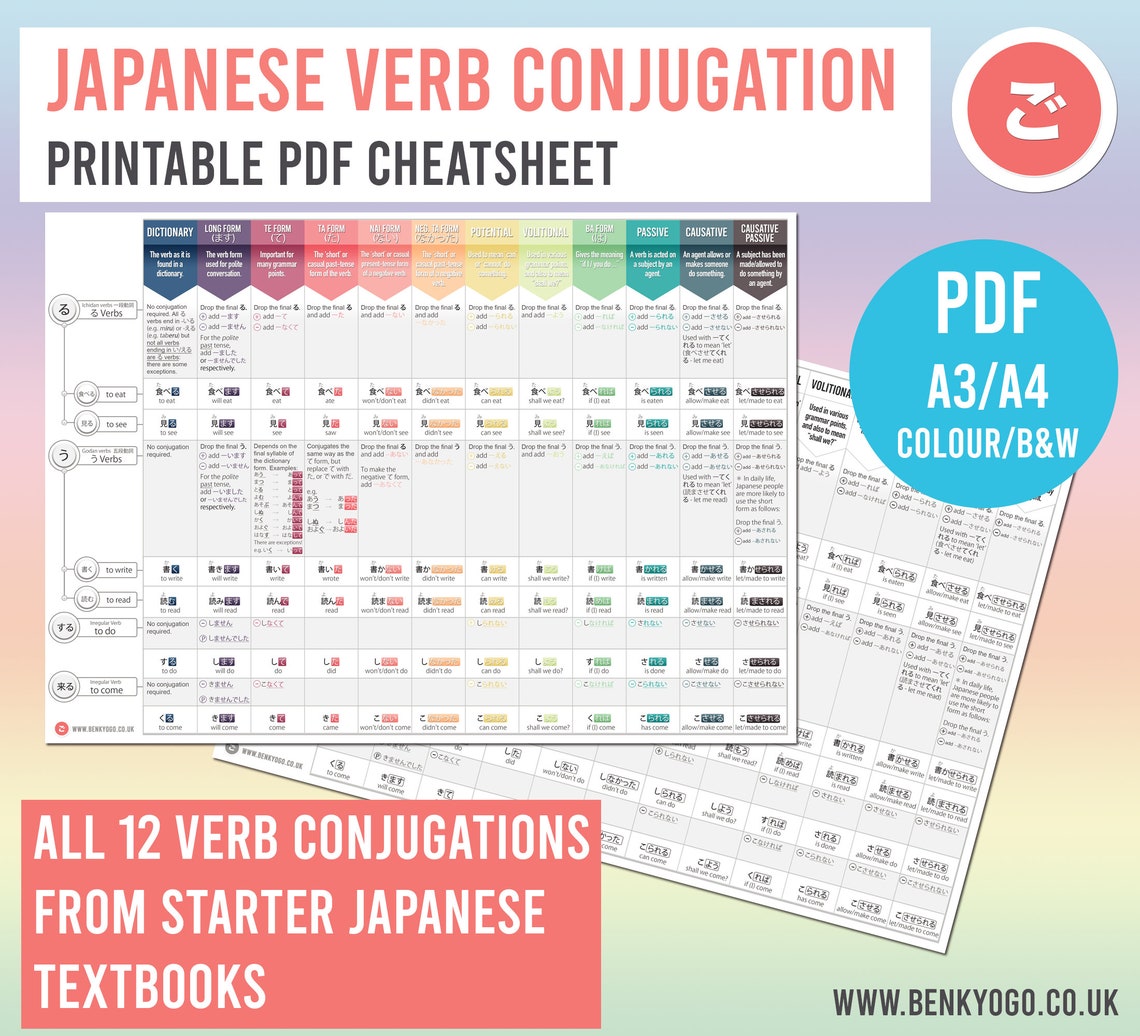
Printable Japanese Verb Conjugation Cheatsheet NEW UPDATED Etsy
Japanese Verb Conjugation In Japanese, you can type in base verb forms such as " ある ", " 行く ", " 食べる "… but also conjugated forms (" あります ", " 行かなかった ", " 食べられません "). The conjugator recognizes kanji as well as hiragana (" いかなかった ") and romaji (" ikanakatta ").

What is Godan/Ichidan or Uverb/Ruverb in Japanese? Crunchy Nihongo!
Japanese verb conjugation basics. 1. Ru verbs. These are verbs that end in -iru and -eru. Examples of this are miru (みる), which means "to look" and taberu (たべる), which means "to eat". 2. Irregular verbs. Thankfully, there are only two irregular verbs in Japanese! The 2 irregular Japanese verbs are suru (する), meaning.

Japanese Verbs Conjugation Chart
Japanese verb conjugation has unique rules from those in English. But don't worry! Some features are simpler—there's no verb conjugation based on the speaker, such as singular vs. plural, gender, or the category of that person grammatically, called 人称 ( ninshō ). This means that in English, verbs change based on who's speaking: I am She is You are
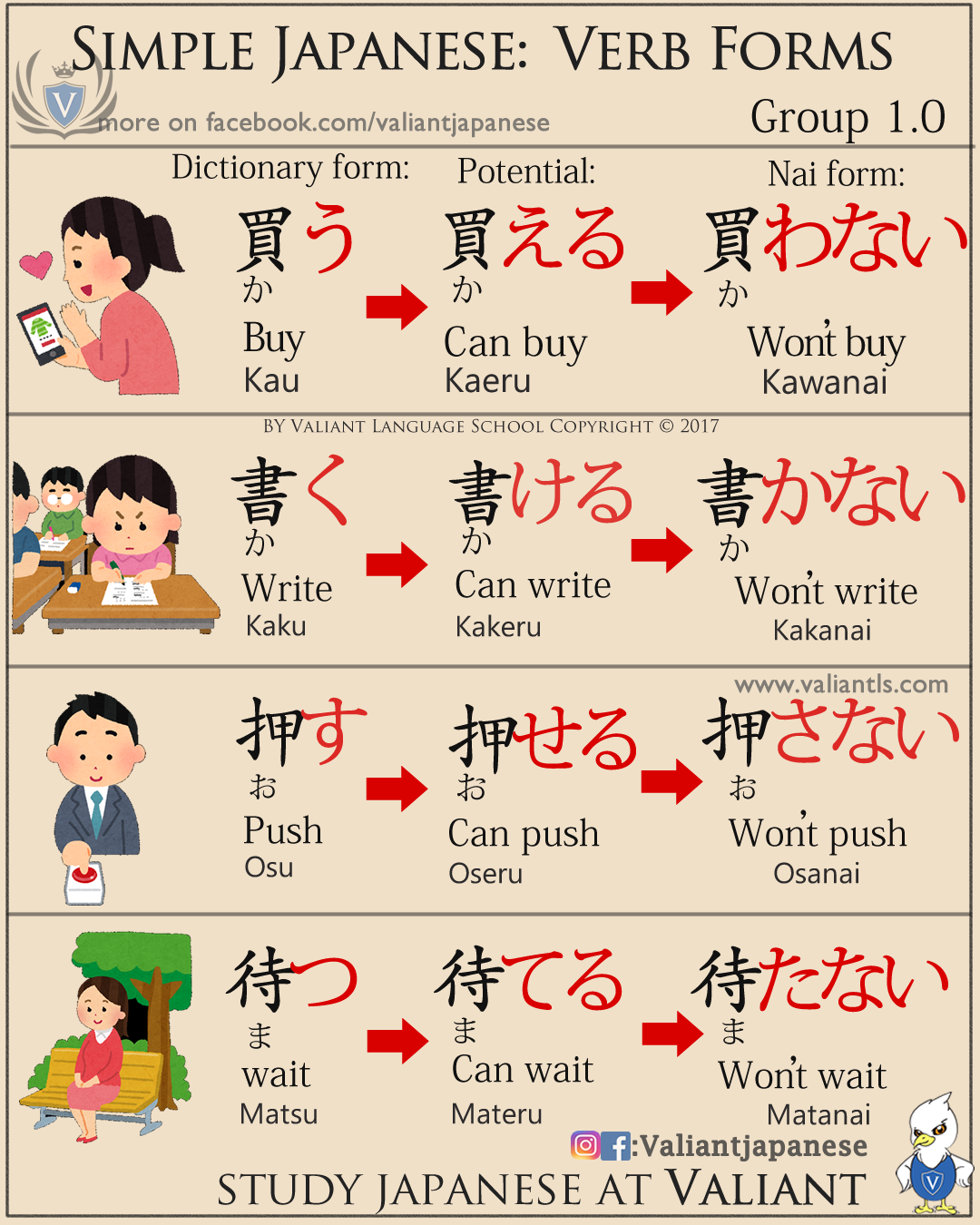
Soy Studys Japanese — valiantschool Japanese Verb Conjugations Group...
Welcome to the only site on the web featuring Japanese verb conjugation and pictures of alien monsters Enter the dictionary form of a Japanese verb and click the button! Alternatively check out the list of Japanese verbs or Ultra Handy Search
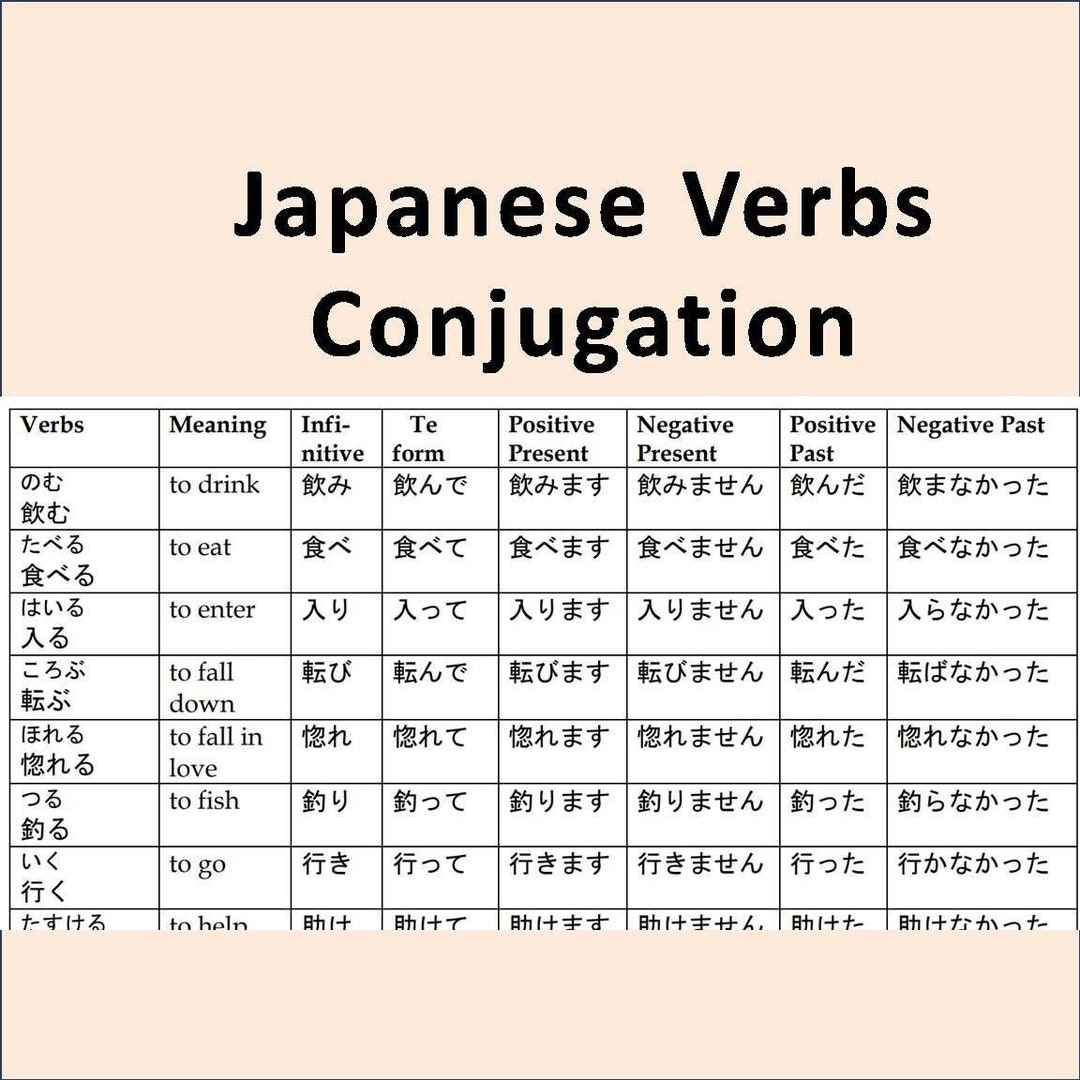
Japanese Verbs Conjugation Japanese for Beginners More Than 60 Verbs Instant Download Etsy
Japanese verb conjugations are independent of person, number and gender (they do not depend on whether the subject is I, you, he, she, we, etc.); the conjugated forms can express meanings such as negation, present and past tense, volition, passive voice, causation, imperative and conditional mood, and ability.
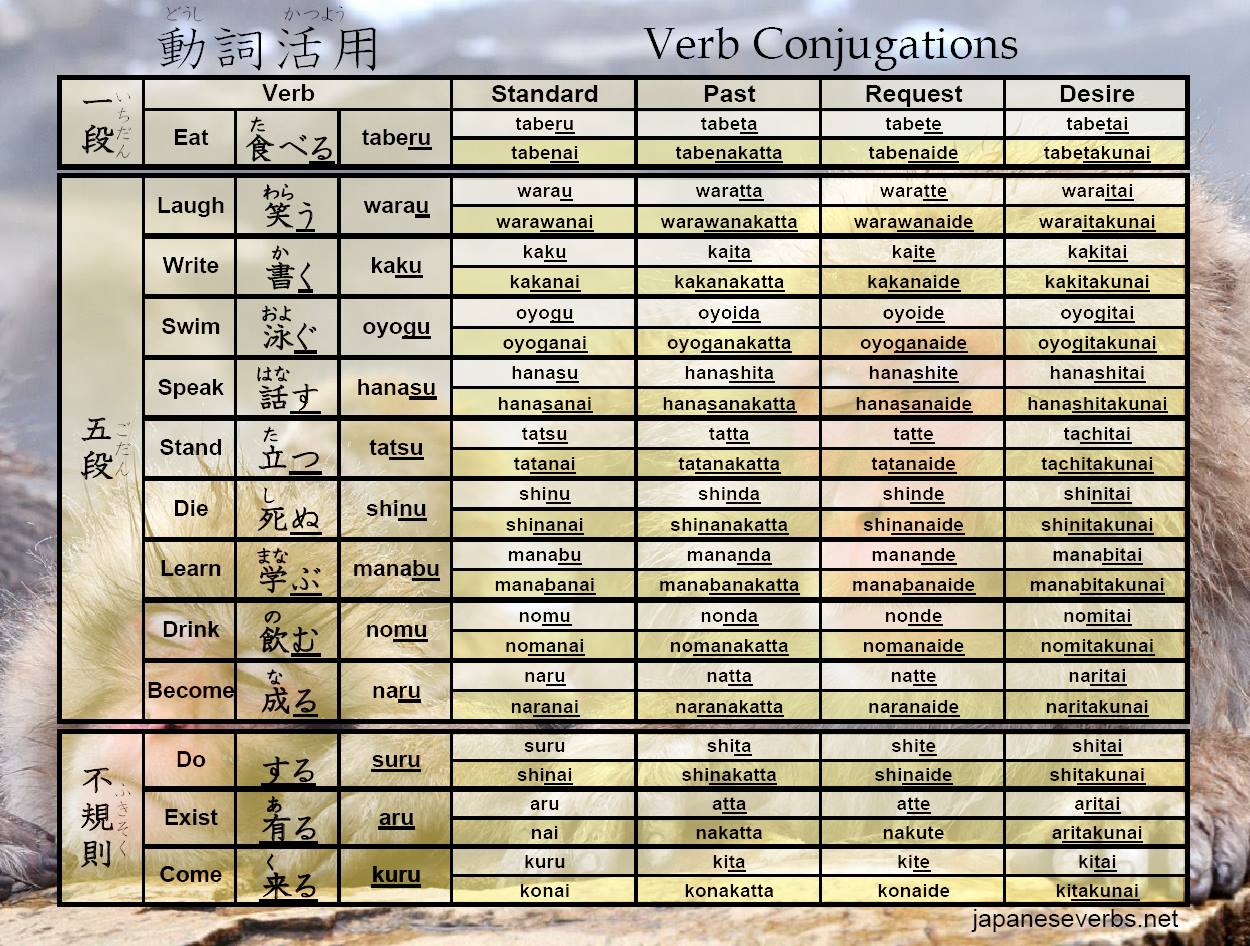
How to Conjugate Japanese Verbs pt. 1 Hattori Japanese Language School
Japanese Conjugation Practice Current Streak 0 Max Streak 0 泳 およ ぐ swim 🚫 Negative 👪 Plain Learn how to conjugate Japanese verbs and adjectives! Includes present tense, past tense, te form, and adverbs.

Printable Japanese Verb Conjugation Cheatsheet NEW UPDATED Etsy
Japanese verb conjugation dictionary form: the foundation "Dictionary form" or "jisho-kei" is called that because when you search in the dictionary, that's the version of the verb you find. It's also used generally for casual Japanese.
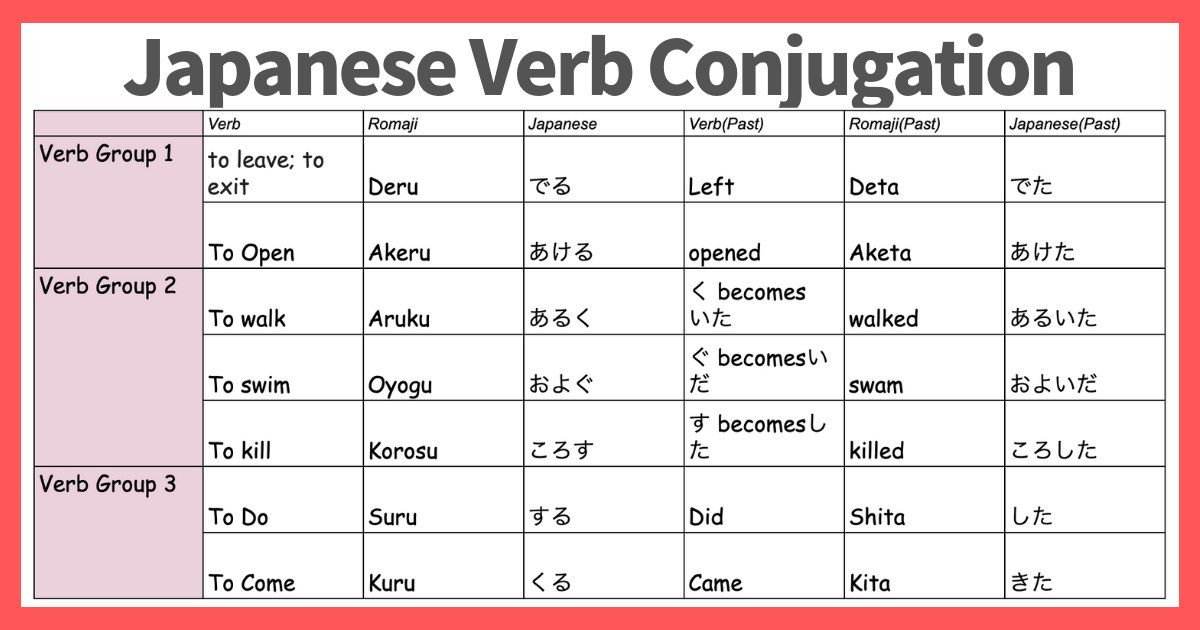
How to conjugate plain form Japanese verbs like a true master.
Japanese verbs have different conjugation patterns depending on what type they are — godan, ichidan, or irregular. Learn all about verb types and conjugation on this page. Table of Contents The Basics Godan Verbs (五段動詞) Ichidan Verbs (一段動詞) Godan Verbs Disguised as Ichidan Verbs Irregular Verbs (変格動詞) Beyond the Basics The Loss of the /W/ Sound